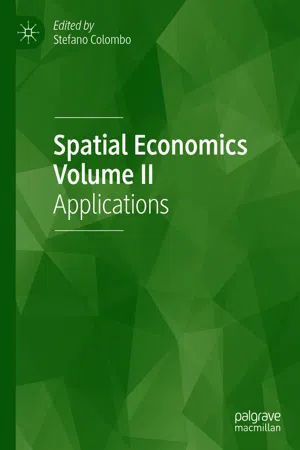1.1 The Resilience Concept: Introduction
Resilience, which has its roots in the Latin word resilire, meaning ‘bouncing back’, is not a new concept. The resilience concept was first used in the field of ecology with the pioneering article of Holling (1973), and this concept is still considered to be relevant in many disciplinary fields at different scale levels, both living and non-living, such as an economy, a micro-organism or a child, in order to understand the process of anticipating, adapting and recovering in the face of major threats or shocks (Masten 2014). The exportability of the resilience concept from ecology to other disciplines, such as economics, engineering, sociology, etc., also plays a prominent role in the success and acceptance of the concept (De Montis et al. 2019). In particular, because of global concerns about major threats, such as disasters, economic crises, diseases, and other threats to human development, the notion of resilience has—despite adversity—become popular over the past decades and has attracted a great deal of international interest (Cassidy 2016; Masten 2014; Barasa et al. 2018).
As a contested concept, resilience is defined in many disciplines on the basis of their intrinsic use needs and priorities (Sharifi and Yamagata 2016). According to the theoretical ecologist Holling (1973), resilience is ‘a measure of the ability of systems to absorb changes of state variables and still persist’. There are two ways to define resilience in the ecological literature (Holling 1996). The first concentrates on efficiency, constancy and predictability features, and underlines stability near an equilibrium steady state. This is called engineering resilience (see, e.g. Pimm 1984) and is defined as the return time to a single equilibrium state. The other concentrates on persistence, change and unpredictability attributes without any emphasis on one equilibrium steady state. It is called ecological resilience (after Holling 1973), and is defined as the amount of disturbance that can be absorbed by the system. The major difference between these two approaches is that—while engineering resilience (also termed the ‘roly-poly toy principle’) focuses on maintaining efficiency—ecological resilience focuses on maintaining the existence of functions (Holling 1996, p. 33; Gunderson 2000). Moreover, Pimm’s resilience definition is based on the strength of the perturbation, while Holling’s definition is based on the size of the attractor/stability domain (Reggiani et al. 2002). From an empirical point of view, the measurement of engineering resilience which is based on a simple cause–effect dynamics (Barasa et al. 2018) is easier than that of ecological resilience (Reggiani et al. 2002). However, from a conceptual point of view, while engineering resilience is about resistance to change in order to conserve existing structures (Folke 2006), ecological resilience is more about creating the capacity to work with that change (Walker and Salt 2006, p. 9). Besides, bouncing back to one steady state after a disturbance or a shock may not be a desirable attribute for systems, while the ability to adapt is clearly desirable (Klein et al. 2003).
Based on Holling’s (1973) definition of resilience, a third interpretation of the resilience notion, which is called socio-ecological resilience, has emerged, as a result of the increasing awareness that ecosystems and human societies affect each other and need to be examined jointly (Sterk et al. 2017). Adger (2000) has highlighted the link between social and ecological resilience by defining social resilience as ‘the ability of groups or communities to cope with external stresses and disturbances as a result of social, political and environmental change’. Following the shift caused by Adger (2000)’s definition, Berkes et al. (2003) defined social-ecological resilience as ‘the amount of change the system can undergo and still retain the same controls on function and structure’, and emphasised the capacity for learning and self-organisation. In the social-ecological resilience interpretation, a disturbance can be seen not just as a threat but also as an opportunity to allow continuous development, renewal of the system, and learning to adapt (Folke 2006). Relating linked social-ecological systems to the concept of resilience (Berkes and Folke 1998), social-ecological resilience extends ecological resilience to embrace the human and cultural elements in a city (Sanchez et al. 2018).
However, there are two opposite views on applying the ecological resilience approach to social science phenomena. Davoudi et al. (2012) has advocated the resilience concept as a bridging concept between ecology and the social sciences based on the synergy that results from integrating different disciplines. It might well be possible that the res...
